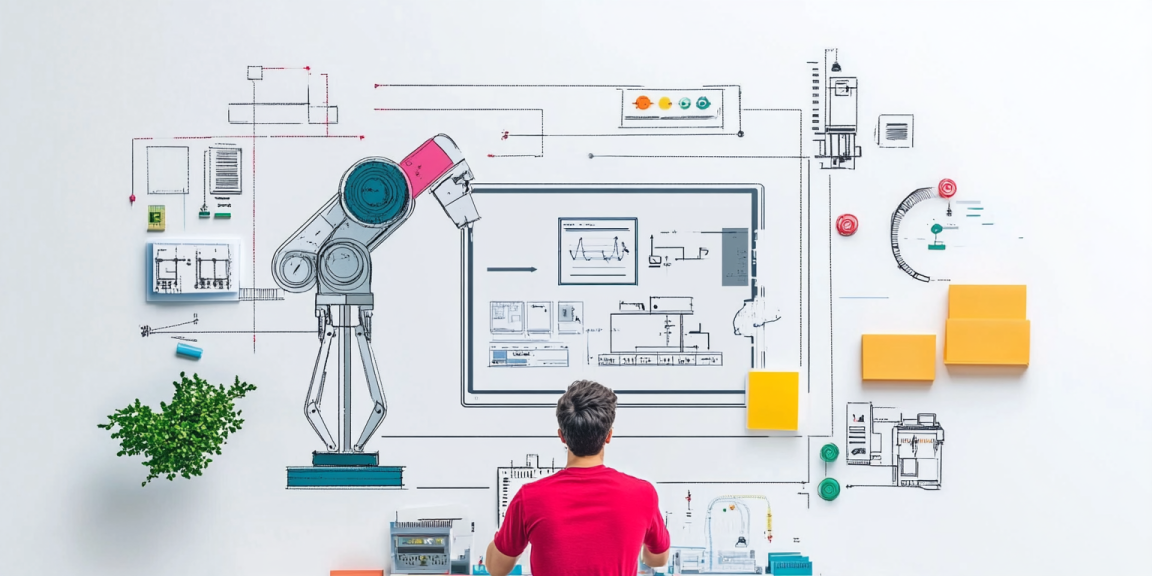The world has been witnessing a significant shift in how we handle money. Digital currencies,…

In today’s rapidly evolving world, technology seems to be advancing at an unprecedented pace. Innovations such as artificial intelligence (AI), machine learning, and blockchain are reshaping industries and society in profound ways. While these technologies are often credited with transforming the way we live, work, and communicate, there’s one key factor that remains central to their development: creativity. Creativity, often associated with the arts and culture, is not only crucial in designing novel ideas and products but also plays a vital role in driving technological progress. In this blog post, we will explore why creativity is, and always will be, the driving force behind technology.
The Intersection of Creativity and Technology
At first glance, technology and creativity may seem like two distinct realms. Technology is often seen as logical, structured, and governed by laws of physics and mathematics, while creativity is typically associated with freedom, imagination, and expression. However, in practice, the two are intricately intertwined.
Creativity in technology can be seen in the way engineers and innovators conceptualize new solutions, design user experiences, and push the boundaries of what’s possible. The creation of something new—whether it’s a product, service, or system—requires innovative thinking, problem-solving, and a willingness to take risks. Without creativity, technological advancements would stagnate, as there would be no drive to create new solutions or imagine how technology could be used in novel ways.
Creativity as the Catalyst for Innovation
When we think about technological breakthroughs, such as the invention of the personal computer, the smartphone, or the internet, it’s clear that creativity played a pivotal role in making these innovations a reality. While technical knowledge and scientific principles were necessary for their development, it was the creative minds of visionaries that saw beyond existing limitations and imagined something entirely new.
For instance, when Steve Jobs and his team at Apple introduced the iPhone, they didn’t just create a phone; they redefined what a phone could be. They combined elements of design, technology, and user experience in ways that had never been done before. The iPhone was not only a technological marvel but a creative leap that changed the entire mobile industry. Creativity allowed Apple to envision the product in a new light—transforming a simple communication device into a powerful tool for entertainment, productivity, and connectivity.
Creativity Drives Problem-Solving in Technology
One of the most powerful aspects of creativity is its ability to solve problems in novel ways. Technology often emerges as a solution to a specific challenge, but it takes a creative mind to figure out how to address that problem effectively.
Take the field of artificial intelligence (AI), for example. AI’s promise is to solve complex problems and automate tasks across various sectors, from healthcare to finance. However, AI itself isn’t inherently creative—it requires human creativity to design algorithms that can process massive amounts of data, make decisions, and adapt to different situations. Machine learning models are only as effective as the creativity put into their design. Innovators need to think outside the box to develop new ways to train AI systems, refine their accuracy, and ensure they can provide solutions to real-world challenges.
Similarly, consider the role of creativity in fields like cybersecurity. As cyber threats become more sophisticated, so must the technology that defends against them. Cybersecurity experts must constantly think creatively to develop new defense strategies, anticipate new types of attacks, and design systems that can adapt to ever-changing risks. This ongoing cycle of creativity and innovation is essential to keeping up with the rapidly evolving landscape of digital threats.
Technology Needs Creativity to Stay Relevant
As technology continues to evolve, creativity remains a crucial component in ensuring that new innovations stay relevant and meet the changing needs of society. Technology alone cannot anticipate the human experience or cultural shifts, but creativity can bridge that gap.
For example, consider the design of software applications or websites. While the underlying code and technology are essential, the user interface (UI) and user experience (UX) design are what ultimately make these tools accessible and enjoyable to use. Creative designers think about how to make complex systems intuitive, easy to navigate, and engaging for users. Without creativity, technology can become cold, impersonal, and difficult to use.
The same holds true for the growing demand for personalization in products and services. Companies are now leveraging data to create tailored experiences for their customers, from personalized shopping recommendations to content curation. The ability to harness this data in a meaningful, human-centered way requires creativity. It’s the creative teams who envision how to integrate these technologies into seamless experiences that truly resonate with users.
Creativity and Technology Empower Each Other
It’s important to note that creativity and technology don’t exist in isolation—they empower each other. Technology enables creativity to flourish by providing the tools and platforms necessary to bring ideas to life. For example, digital design software, video editing tools, and 3D printing technologies give creators new ways to express their ideas. Similarly, creative thinking pushes technology to evolve, as new ideas often spark the next wave of technological advancement.
The development of virtual reality (VR) is a prime example of how creativity and technology work hand in hand. The concept of immersive virtual worlds has been around for decades, but it wasn’t until technological advances in graphics processing, motion tracking, and computing power caught up that VR became a feasible product. At the same time, creative minds have been pushing the limits of VR’s potential—whether it’s in gaming, education, or healthcare. The intersection of creativity and technology in VR has led to experiences that are not only technically impressive but also emotionally impactful.
Creativity in Tech Culture
Another reason creativity remains the driving force behind technology is the culture that surrounds the tech industry. The tech world has long been home to creative individuals—entrepreneurs, designers, engineers, and innovators who think outside the box and challenge conventional wisdom.
In Silicon Valley, for example, the culture of “fail fast and iterate” encourages creative thinking and experimentation. Companies embrace new ideas, even if they might not always succeed on the first try. This willingness to experiment and innovate allows for breakthroughs that would be impossible in a more rigid, risk-averse environment.
Startups, in particular, thrive on creativity, as they often have limited resources but a great deal of ambition. Founders must come up with creative ways to solve problems, attract customers, and scale their businesses. The creativity of these small companies often leads to the next big disruption in the tech industry.
The Role of Creativity in Future Technologies
Looking forward, creativity will continue to play a central role in the development of emerging technologies. Fields such as quantum computing, autonomous vehicles, and biotechnology present challenges that require both scientific expertise and creative thinking. Quantum computing, for example, operates on principles that are difficult to grasp and even harder to apply in practical ways. It will take creative minds to find innovative solutions for harnessing the power of quantum mechanics and making it useful for real-world applications.
Autonomous vehicles also require creative thinking in areas like navigation, safety, and ethics. While the technology to power self-driving cars exists, the challenges surrounding their widespread adoption will require new, creative solutions—whether it’s in how these cars interact with human drivers, how they handle unpredictable road conditions, or how they are integrated into existing transportation systems.
In biotechnology, creativity will be critical in unlocking new treatments, therapies, and medical breakthroughs. Researchers will need to think creatively to address complex problems such as drug resistance, gene editing, and personalized medicine. Innovation in healthcare technology can lead to solutions that save lives, improve quality of life, and revolutionize the way we approach medicine.
Conclusion
The relationship between creativity and technology is symbiotic, with each driving the other forward. While technology provides the tools to bring ideas to life, creativity is what makes those ideas meaningful, relevant, and transformative. From the design of innovative products to solving complex problems and anticipating future needs, creativity remains the core driver of technological progress.
As we look to the future, it’s clear that creativity will continue to be at the heart of the most exciting technological advancements. Whether in AI, virtual reality, quantum computing, or healthcare, it is the creative minds that will shape the next era of innovation. In a world that is increasingly driven by technology, it’s important to remember that it is creativity that ultimately powers the breakthroughs that change our lives.



